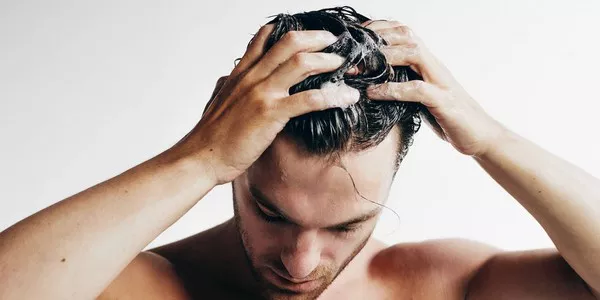I. Understanding Male Pattern Baldness
Male pattern baldness, also known as androgenetic alopecia, is a common condition that affects a significant percentage of men worldwide. While it is largely influenced by genetics and hormonal factors, various strategies can help prevent or slow down its progression. Understanding the underlying causes and implementing effective preventive measures is crucial in maintaining healthy hair and preventing excessive hair loss.
II. Healthy Lifestyle Habits for Hair Preservation
Maintaining a healthy lifestyle is paramount in preserving hair and preventing male pattern baldness. Incorporating a balanced diet rich in essential nutrients, regular exercise, and stress management techniques can significantly contribute to overall hair health. A diet comprising ample protein, vitamins, and minerals, such as iron, zinc, and omega-3 fatty acids, can promote hair growth and reduce the risk of hair loss.
III. Effective Hair Care Regimen
Adopting an effective hair care regimen can play a pivotal role in preventing male pattern baldness. Using gentle hair care products that suit your hair type, avoiding excessive heat styling, and minimizing the use of harsh chemicals can help preserve the integrity of your hair. Additionally, regular scalp massages can improve blood circulation and stimulate hair follicles, promoting healthy hair growth and reducing the risk of hair loss.
IV. Medical Treatments and Therapies
Several medical treatments and therapies have shown promising results in preventing or slowing down male pattern baldness. FDA-approved medications like minoxidil and finasteride have been widely used to treat hair loss by promoting hair growth and inhibiting the production of dihydrotestosterone (DHT), a hormone associated with male pattern baldness. Furthermore, low-level laser therapy and platelet-rich plasma (PRP) treatments have gained popularity in stimulating hair follicles and promoting hair regrowth.
V. Advanced Surgical Interventions
For individuals experiencing significant hair loss, advanced surgical interventions like hair transplantation can provide a long-term solution. Follicular unit transplantation (FUT) and follicular unit extraction (FUE) are two common techniques used in hair transplantation procedures. These methods involve extracting healthy hair follicles from the donor area and transplanting them into the balding areas, resulting in natural-looking hair growth and a restored appearance.
VI. Consultation with a Trained Professional
Seeking guidance from a qualified dermatologist or a hair restoration specialist is essential in developing a personalized approach to prevent or slow down male pattern baldness. These professionals can accurately assess the underlying causes of hair loss, recommend suitable treatment options, and provide valuable guidance on maintaining optimal hair health. Consulting with a knowledgeable expert can ensure that you receive the most effective and appropriate strategies for combating hair loss.
VII. FAQs on Hair Loss Prevention
Q1: Can stress contribute to male pattern baldness?
Stress can exacerbate hair loss in individuals genetically predisposed to male pattern baldness. Managing stress through relaxation techniques and stress-reducing activities can help minimize its impact on hair health.
Q2: Are natural remedies effective in preventing hair loss?
While some natural remedies may contribute to overall hair health, their efficacy in preventing male pattern baldness is limited. It is advisable to combine natural remedies with medically proven treatments for better results.
Q3: At what age does male pattern baldness typically start?
Male pattern baldness can begin as early as the late teenage years, but it commonly becomes noticeable in the 30s or 40s. However, the age of onset can vary depending on genetic predisposition and hormonal factors.
Q4: Is it possible to reverse male pattern baldness completely?
While certain treatments can help slow down the progression of male pattern baldness and promote hair regrowth, complete reversal is not always guaranteed. Early intervention and consistent adherence to a comprehensive hair care regimen can yield the most favorable outcomes.
By incorporating these preventive strategies and seeking professional guidance, individuals can effectively manage male pattern baldness and maintain healthy hair growth, promoting overall confidence and well-being.

